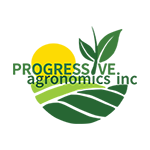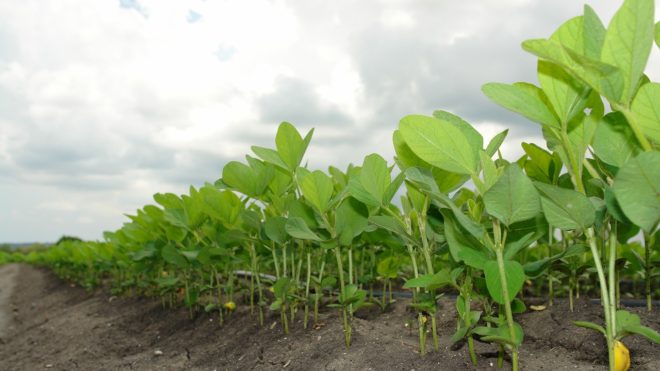In today’s farm economy, we are always looking for ways to be efficient and profitable, while trying to keep costs in check. This is when the value of our Practical Farm Research (PFR)® data becomes part of your decision making. Since 1964, the Beck family has worked to bring new ideas to your farm to increase productivity and profit. Beck’s PFR has developed the PRF Proven endorsement to help you decide which products and practices you should try in your operation. This year, we have identified PFR Proven strategies for success based on the key things we have learned in PFR that will lead you to higher soybean yields.
Over our entire marketing area and at all of our PFR research locations, these five practices have been our most consistent soybean yield increasing practices.
1 – Fungicide at R3
The first step to higher-yielding soybeans is spraying a fungicide at R3 (R3 is when there is a pod 3/16 in. long at one of the four uppermost nodes). This has been one of the most consistent paybacks in PFR. We have four fungicides that are PFR Proven for soybeans, and we know that spraying at the R3 growth stage is the most important key to success. Even in years with little to no disease pressure, we see yield increases from improved plant health and a longer grain fill period. A longer grain fill period gives us the chance to have a larger soybean size at harvest. Soybean size can account for up to 1/3 of your soybean’s yield potential! This holds true even with late-planted soybeans.
2 – Plant Early
PFR data has also shown that planting soybeans earlier leads to higher yields. Soybeans aren’t given enough credit for their ability to handle colder weather and planting conditions. Again, by planting early, we are extending the grain fill period for soybeans. Planting early also allows them to harvest more sunlight through the reproductive and flowering stages, which results in more pods. Consider planting some soybeans before you even start corn planting.
3 – Use Seed Treatments
Since we are planting earlier, seed treatments become extremely important. When soil conditions are cool and wet, the plants are more susceptible to seedling diseases and insects. Ten years of PFR data shows a $50/A. advantage to using Beck’s base seed treatment, Escalate®. We are protecting yield with seed treatments. PFR studies have also shown an additional yield advantage by adding nematode and insect protection with Escalate | Nemasect®, as well as sudden death syndrome protection and white mold suppression with Escalate|Nemasect|SDS+ upgrade.
4 – Narrower Row Width
Ten years of PFR studies comparing row widths show a $31/A. advantage to 15 in. rows over 30 in. rows. Iowa State University research has seen as consistent 4.5 Bu./A. advantage to 15 in. rows over 30 in. rows. When we plant early in a row spacing less than 30 in., we can close the canopy quicker and therefore allow the soybeans to harvest more sunlight. Planting early into narrow rows also helps shade the ground, keeping soil temperatures cooler while shading out weed pressure. When we plant in narrower rows, we are also spacing the soybeans out more down the row and letting them produce more branches, which means more nodes per plant.
5 – Seeding Rates
Lowering seeding rates has been a trend over the last few years. The reason: better yields. Lowering planting population has also become one of the most stressful practices to implement. So, why is it working? For many of the reasons we have already mentioned, like branching and harvesting more sunlight. Lowering planting populations also gives us more nodes per plant, with less vegetative growth, which means shorter plants. High-yielding soybeans are not very tall! The key to lower populations though is to have your soybean planter as prepared for the field as your corn planter. Planting your soybeans early and at a consistent depth with good spacing leads to higher yields.
~Steve Gauck – Field Agronomist

